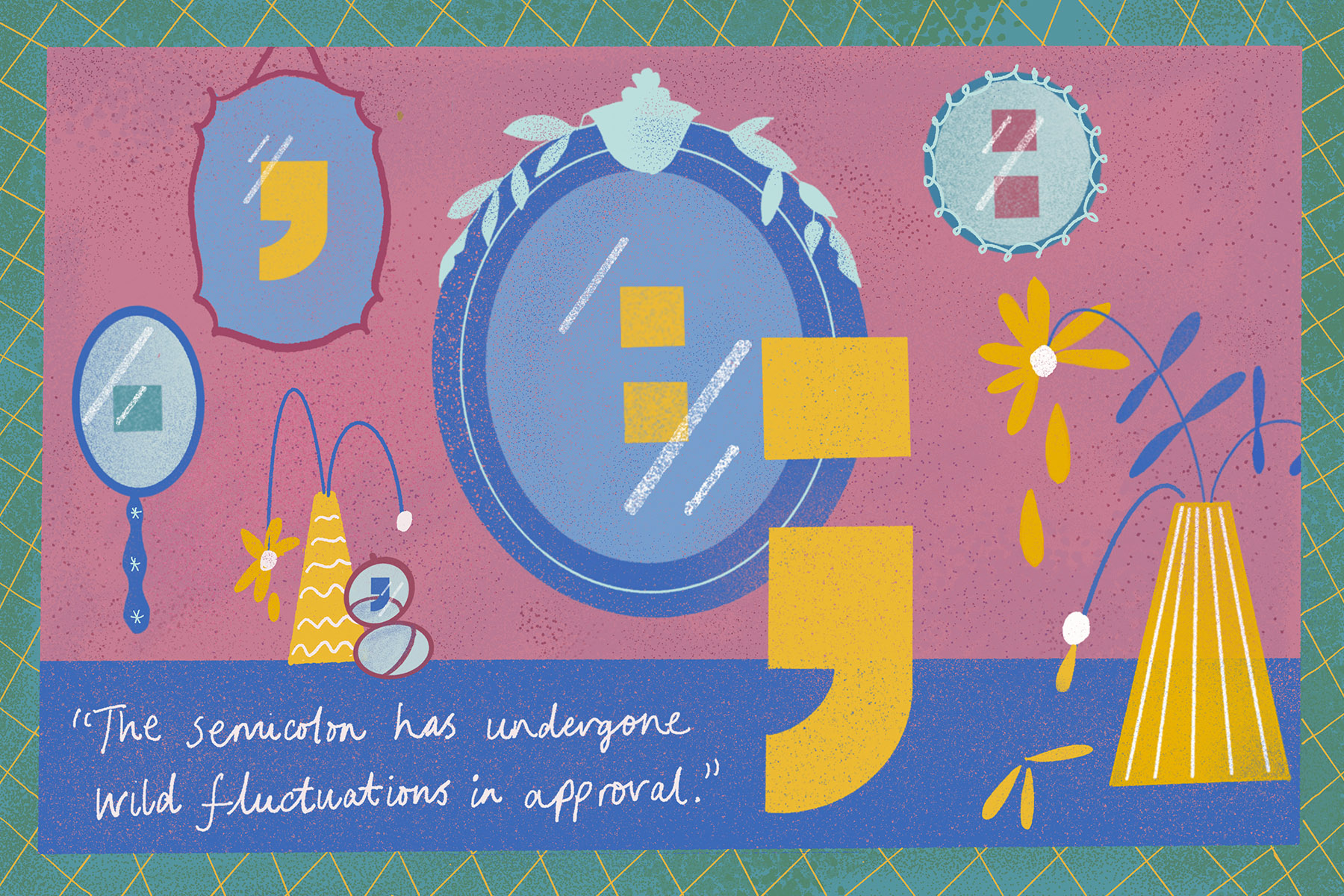
- Home |
- Search Results |
- Semi-colons; or, learning to love literature’s most misunderstood punctuation
Kurt Vonnegut might find the headline on this essay too pretentious.
In 2005, the author of Slaughterhouse 5 and Welcome to the Monkey House wrote a vicious little line about the semi-colon that has since seemed to lodge itself into the brains of writers and grammarians everywhere: “Do not use semicolons,” wrote Vonnegut; “All they do is show you’ve been to college.”
Since it first appeared in the work of Italian scholar and printer Aldus Pius Manutius the Elder in 1494, the semi-colon has undergone wilder fluctuations in approval than perhaps any other punctuation mark. And it’s still widely misunderstood to this day; when I mentioned this essay to a peer, she remarked that she was “not going to pretend I know how to use it.”
For those who don’t: the semi-colon is commonly used to link together two independent yet related clauses, as in this sentence: “The line didn’t quite feel complete; it needed something else.” It’s particularly useful for juxtaposition, as in “I love jazz; my partner prefers folk.” They can also replace commas in lists where commas already exist to avoid complication (“On her holidays, she would visit Paris, France; Rome, Italy; and Berlin, Germany”), and in places where a comma would create a splice.
“Do not use semicolons,” wrote Kurt Vonnegut; “All they do is show you’ve been to college.”
Yet, long before Vonnegut saw to its modern humiliation, the semi-colon had scores of detractors. By the mid-19th Century, Edgar Allan Poe was already calling for the dash to dethrone it; in the 20th, Gertrude Stein found them showy, while George Orwell unkindly referred to them as “an unnecessary stop”. Cormac McCarthy joined the pile-on in the 21st Century by dismissing them as “idiocy”.
And in a 2017 study by Slate that measured semi-colon use by author, many of today’s bestselling authors, among them E.L. James, Agatha Christie, John Grisham, James Patterson and, yes, Vonnegut himself, were found to use scant numbers of semi-colons in comparison to other authors (less than 100 times per 100,000 words, all). The modern reading public, it seems, do not look favourably on the semi-colon.
That it is misunderstood is not an original notion. Just five sentences in, the Wikipedia page for the semi-colon refers to it as “likely the least understood of the standard marks”, and even Lynne Truss, the author of Eats, Shoots & Leaves: The Zero Tolerance Approach to Punctuation, received a dressing-down by The New Yorker for what they referred to as “two misused semicolons” in the book’s preface.
But its value, when it is used correctly, feels obvious. In the Oxford Dictionary of English, which refers to it as “a punctuation mark indicating a pause, typically between two main clauses, that is more pronounced than that indicated by a comma”, we get closer to the semi-colon’s real value, and true beauty: the semi-colon, more elegantly than any other punctuation, expresses time.
The semi-colon, more elegantly than any other punctuation, expresses time
Here is a passage from Virginia Woolf’s Mrs Dalloway, itself a novel-length meditation on time:
Having lived in Westminster—how many years now? Over twenty—one feels even in the midst of traffic, or waking at night, Clarissa was positive, a particular hush, or solemnity; an indescribable pause; a suspense (but that might be her heart, affected, they said, by influenza) before Big Ben strikes. There! Out it boomed. First a warning, musical; then the hour, irrevocable.
Can you feel the “indescribable pause”, to borrow Woolf’s term, between the “warning, musical” and “the hour, irrevocable”? With what other punctuation might Woolf have achieved that effect? Certainly not with Poe’s dash. A full stop would feel rigid, militaristic; the semi-colon hangs, shimmering, in the air, just long enough to feel it.
Indeed, the 1737 guide Bibliotheca Technologica suggested that punctuation’s use was dictated by natural speech and thought pauses: “The comma (,) which stops the voice while you tell one. The Semicolon (;) pauseth while you tell two. The Colon (:) while you tell three; and then period, or full stop (.) while you tell four.”
At the other end of Slate’s findings, some of the most respected authors of all time can be found: Charles Dickens, Mark Twain and, right at the very top, Jane Austen, who used a semi-colon with the impressive regularity of once every 1000 words. But it was perhaps the famous American President and orator Abraham Lincoln who cut most cleanly through the accusation of pretention that beleaguers the semi-colon when, in 1864, he admitted not just "I have a great respect for the semi-colon; it’s a very useful little chap”, but that: “With educated people, I suppose, punctuation is a matter of rule; with me it is a matter of feeling.”
The Bibliotheca Technologica’s “pauseth”, Lincoln knew, was everything; it lent gravitas to language. Skilful orators like Lincoln and Martin Luther King use semi-colons with magnificent ease; so, in addition to Dickens, Twain, and Austen, do writers as varied as Raymond Chandler, Chinua Achebe, Salman Rushdie, and Rebecca Solnit.
And, unlike its somehow more ‘whole’ cousin the colon, the semi-colon doesn’t subordinate; it balances. Equal parts poignant pause, an organiser of lists, and juxtaposer of thoughts, they are anything but pretentious. And the more you see them, the easier it becomes to incorporate them seamlessly into writing. Kurt Vonnegut hated semi-colons; you don’t have to.
Image: Alicia Fernandes / Penguin.
What did you think of this article? Email editor@penguinrandomhouse.co.uk and let us know.